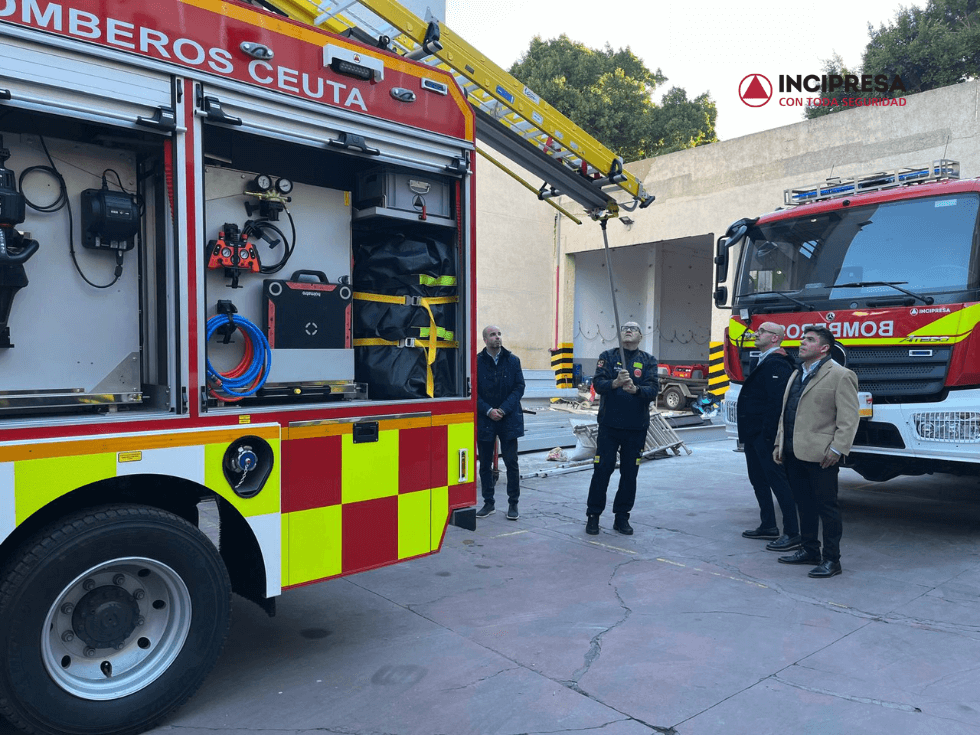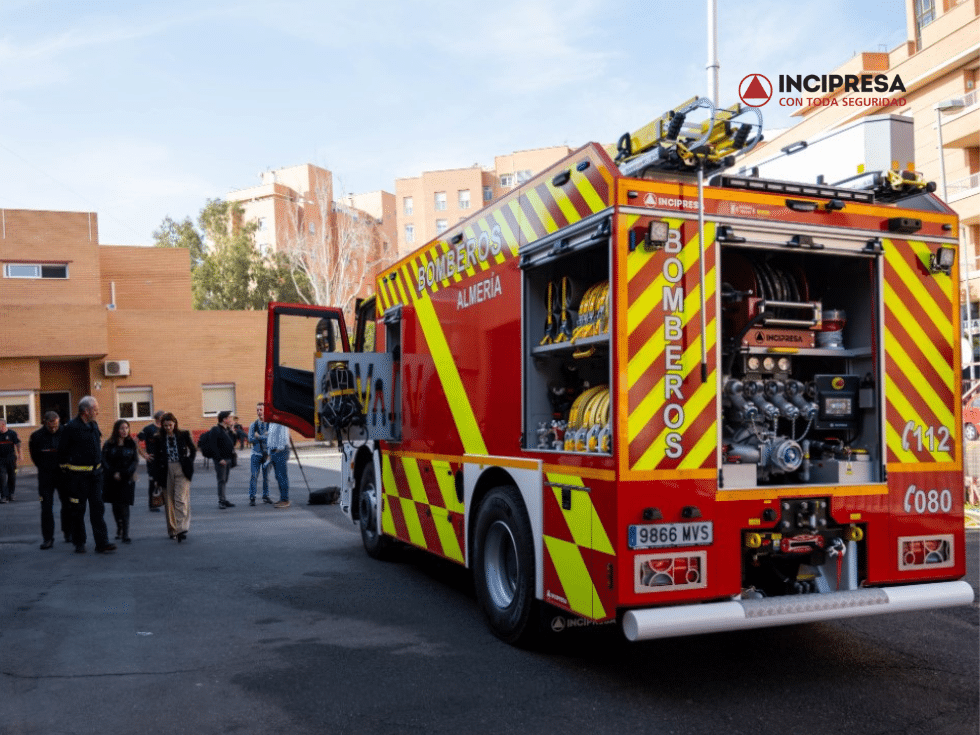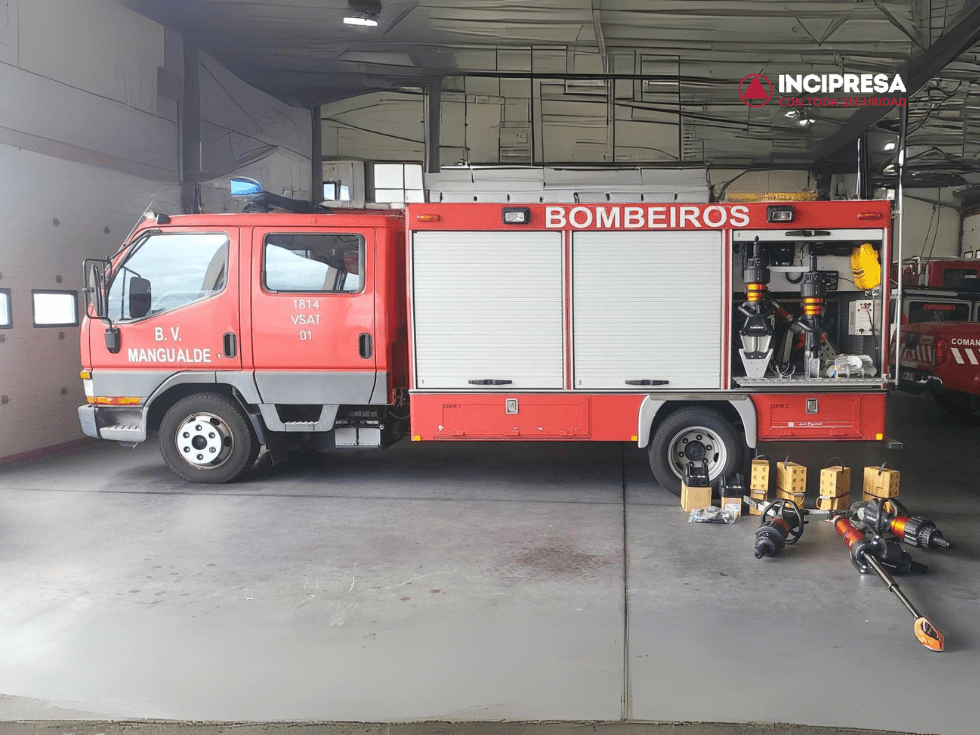We are pleased to announce that Incipresa has successfully completed…

Incipresa will supply a new Extendable Self-Arm Rescue Vehicle (ABE) to the Valencia Fire Department
This vehicle will have the longest articulated arm that the Valencia fire department has ever had.
The councillor for Firefighters, the popular Juan Carlos Caballero, has reported that the Valencia City Council has contracted the construction and purchase of an Extendable Auto-arm (ABE) rescue vehicle that will have a 55-metre articulated arm, the longest in the municipal emergency body, and that will be available to municipal workers in 2026, that is, in 20 months, which is the planned execution period for building this equipment.
When the incident occurred, one of the criticisms that was launched was the lack of material resources – high-rise ladder cranes – with which the Valencia firefighters had to work. Therefore, the purchase of this vehicle will help to tackle and extinguish future fires in high-rise buildings.

The total budget amounts to 1.658 million euros
The contract for the supply of a 55-metre Extendable Self-Arm (ABE) rescue vehiclefor the Valencia City Council’s Fire, Prevention, Emergency Intervention and Civil Protection Department has been awarded to Incipresa, a company specialising in the adaptation and transformation of emergency vehicles. The total budget amounts to 1,658,002.50 euros.
In this way, the municipal Firefighters continue to make progress in the modernisation of their fleet of high-altitude vehicles for firefighting and rescue, due to the ageing of the current first-response vehicles. This new vehicle will significantly improve the efficiency and effectiveness of firefighting services, as there are currently no vehicles of this height available.
“The incorporation of this new high-altitude vehicle aims to carry out rescues at greater heights compared to the vehicles currently available in the department,” municipal sources have stressed.
In addition, the aim is to improve maneuverability in rescue operations, taking advantage of the advanced capabilities of the articulated arms in contrast to traditional ladders.
The telescopic arm will be installed on a four-axle chassis and will have a diesel engine with a minimum power of 490 hp and six in-line cylinders, with a minimum displacement of 12.5 liters.
The vehicle will have a maximum authorized mass of 32 tons, an automatic gearbox, a steel fuel tank with a capacity of 200 liters and a simple three-seat cabin, for the driver and passengers.
The main support element of the high-altitude unit assembly will be formed by a frame that will amply withstand all the loads caused by the movements of the unit. This frame will be fixed to the vehicle’s original chassis by means of a steel structure that provides great rigidity, maximum comfort and operational safety.
Vehicle with two arms
The new vehicle will have at least two arms. The main one will be equipped with telescopic sections and the approach arm will be articulated at its junction with the main one. This second arm will connect to the work basket in such a way that it allows the highest degree of natural safety for its occupants and to be able to overcome obstacles. Regarding dimensions and reach, “the vehicle will have a minimum working height of 54 metres, a minimum load in the basket of 450 kg and a horizontal working reach of at least 29 metres, with 130 kg of load in the basket.”
The work basket will be suspended at the end of the approach arm in such a way that it allows the highest degree of natural safety. It will have a load capacity of at least 450 kg without the use of a monitor. The basket will have two entrances: one at the front with a folding platform with safety railing, for rescue and rescue tasks, and a second access on the side. As for the water cannon, its nominal flow will be greater than 2,000 liters per minute and its range will be regulated automatically.
The delivery of the rescue vehicle is expected in 2026.











